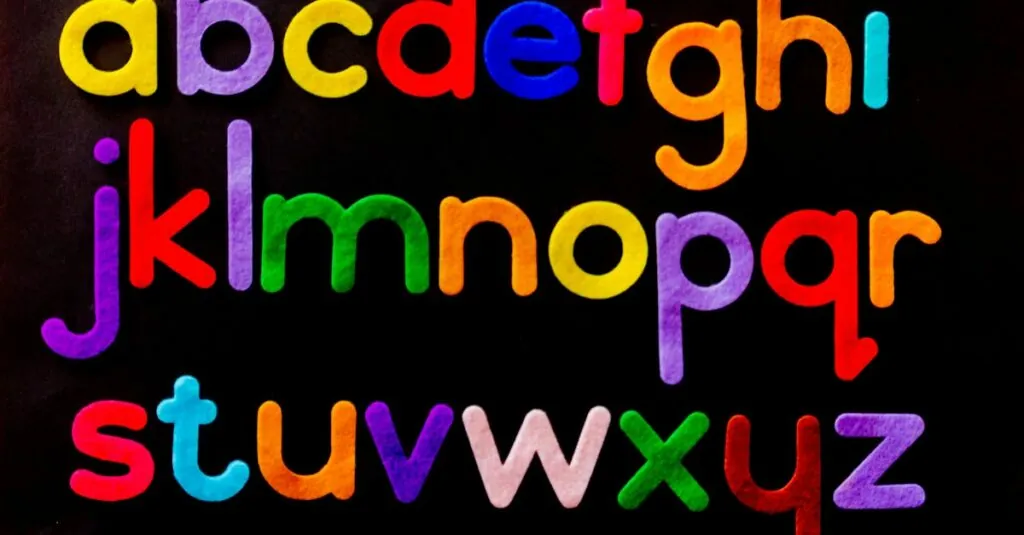When it comes to adding images in Google Docs, not all heroes wear capes—some come in the form of file types. Navigating the world of images can feel like a maze, especially when you’re trying to figure out which formats play nice with Google’s beloved document editor. Fear not, for this guide is here to save the day!
Table of Contents
ToggleOverview of Google Docs Image Support
Google Docs supports several image file types, allowing users to add various visual elements to their documents. This functionality enhances the overall presentation and clarity of the content. Commonly supported formats include JPEG, PNG, GIF, and BMP.
JPEG files are widely used due to their efficient compression, making them ideal for photographs. PNG files offer advantages with transparency features, making them suitable for logos and icons. GIF files are distinctive with their ability to display simple animations. BMP files, while larger, maintain high-quality images for detailed representations.
Users can insert images through multiple methods. They can upload images directly from their device, access images from Google Drive, or use the built-in search feature to find images online. Additionally, users should note that images inserted cannot exceed a file size of 50MB.
Certain limitations exist concerning image resolution and editing capabilities within Google Docs. High-resolution images may slow document performance, while basic editing features include resizing and cropping. Advanced editing requires integration with Google Drawings or external image editing software.
Understanding these supported types and their functionalities enables users to enhance visually engaging documents effectively. Familiarity with the limitations alongside the support helps streamline the document creation process.
Common Image Types Supported
Google Docs supports various image file types that cater to different user needs. Familiarity with each format enhances the overall document experience.
JPEG Format
JPEG files are widely used in Google Docs, particularly for photographs. They’re known for their efficient compression, which makes them ideal for large images while maintaining reasonable quality. Users often choose JPEGs when balancing file size and image fidelity. This format supports over 16 million colors, ensuring vibrant picture quality. A notable limitation, however, is that JPEGs do not preserve transparency, making them less suitable for logos or images needing a clear background.
PNG Format
PNG files excel in Google Docs for images requiring transparency. Designers often prefer this format when logos or graphics need a clear backdrop. PNGs utilize lossless compression, which maintains high quality without sacrificing detail. These images support a wider range of colors compared to other formats. Users can also insert images with varying levels of opacity. However, PNG files tend to be larger than JPEGs, which may impact document performance if too many are used.
GIF Format
GIFs find their place in Google Docs for animated images. Users appreciate this format for displaying simple animations or engaging graphics. A significant advantage of GIFs is their ability to create looping animations without needing external software. The color palette is limited to 256 colors, which can affect image quality. Despite this limitation, GIFs remain popular for memes and lighthearted content. Users should consider the file size when including multiple GIFs, as large animations can slow down document loading times.
Less Common Image Types
Google Docs supports several less common image types, expanding users’ options for adding content. Understanding these formats enhances document versatility.
BMP Format
BMP files deliver high-quality images due to their uncompressed nature. Users appreciate this format for its exceptional clarity, making it suitable for detailed visuals. However, BMP files occupy significant storage space, which can be restrictive in larger documents. Google Docs allows these images, but users should consider their impact on overall document performance. Optimizing BMP images before inserting them can mitigate potential slowdowns.
TIFF Format
TIFF files are another option available within Google Docs, valued for their support of high-resolution images. This format excels in professional environments where image fidelity is paramount. TIFF supports both lossless compression and transparency, enabling crisp visuals even after multiple edits. Despite these advantages, file size can be considerable, so it’s vital to manage these images judiciously. Users must balance quality with file limits, as excessive sizes may hinder document functionality.
Best Practices for Using Images in Google Docs
Incorporating images into Google Docs enhances the visual appeal of documents. Optimize file sizes to ensure efficient loading and editing. Large images may slow down document performance, especially with files exceeding the 50MB limit.
When selecting image formats, choose based on the document needs. JPEGs suit photographs and detailed visuals due to efficient compression. Use PNGs for images requiring transparency, as they preserve quality. GIFs add engaging animations but may limit color depth. BMPs provide high-quality imagery but consume substantial disk space. TIFFs, while excellent for high-resolution needs, require careful management.
Ensure images are placed strategically within the document for improved reader engagement. Consider image alignment options to create a polished look. Centering or adjusting margins can make images stand out. Additionally, proper captions and alt text enhance accessibility for all users, including those using screen readers.
Editing options within Google Docs are limited. For basic adjustments, users can crop or resize images directly in the document. Advanced editing often necessitates the use of Google Drawings or external software before insertion.
Regularly review document performance when using multiple images. Too many pictures can hinder loading times and make editing cumbersome. Balancing quality and performance will lead to a visually appealing, functional document.
Understanding the supported image types in Google Docs is crucial for creating effective and visually appealing documents. By choosing the right format for specific needs users can enhance their content while maintaining optimal performance.
Utilizing JPEGs for photos or PNGs for images requiring transparency can significantly improve the overall presentation. Incorporating GIFs for animations adds a dynamic touch while being mindful of file sizes ensures smooth document functionality.
With the right approach to image selection and placement users can create engaging and accessible documents that resonate with their audience. Balancing quality and performance will lead to a more enjoyable editing experience and a polished final product.





